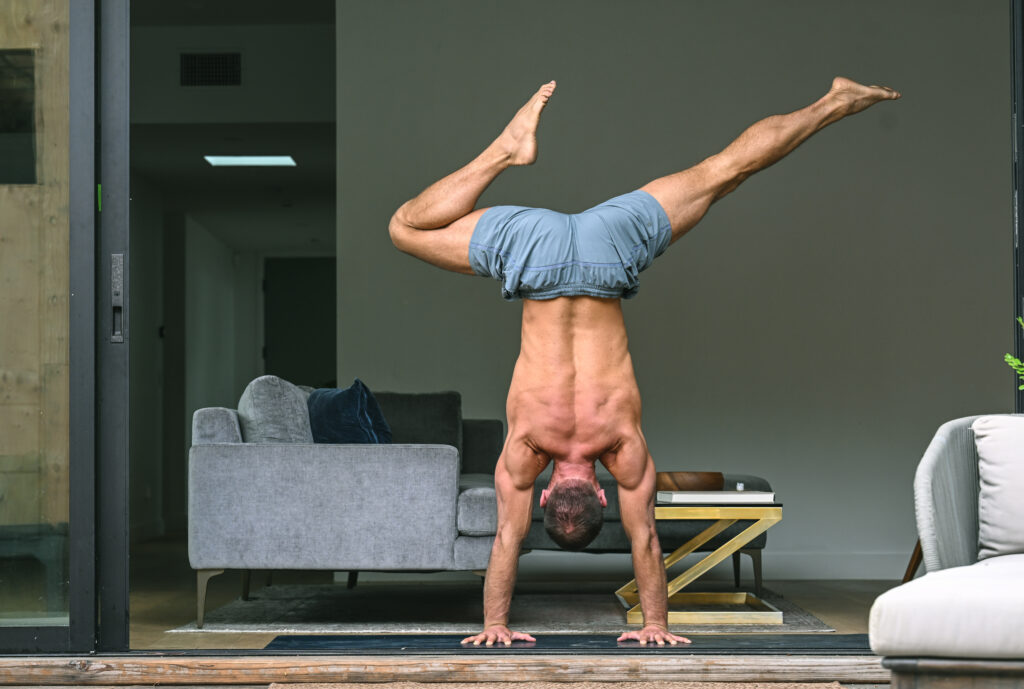Mastering Handstands: A Journey of Strength, Balance, and Mindfulness

In the realm of yoga, inversions, and particularly handstands, stand as powerful and transformative poses that demand strength, balance, and a mindful approach. As a yoga teacher, guiding students into inversions involves not only imparting physical techniques but also delving into the mental and emotional aspects of these challenging postures.
Handstand is usually the first inversion that we introduce to our students. But even though it is the introduction to this class of poses, it still requires a solid foundation. Building wrist and shoulder strength is crucial, as these areas bear the weight of the body. Incorporating preparatory poses like downward dog, dolphin pose, and forearm planks helps condition and strengthen these regions. Focusing on proper alignment during foundational poses is essential for injury prevention and overall stability.
Moving away from the wall in handstand practice signifies a shift from dependency to self-reliance. Core engagement becomes paramount, and exercises like boat pose (navasana), plank, and leg lifts contribute to core strength. Practicing L-shape handstands—balancing on hands while extending one leg upwards—gradually introduces the feeling of being upside down without the reliance on the wall. These preparatory poses cultivate the necessary muscle memory, allowing practitioners to understand the subtle adjustments required for balance.
The mental aspect of inversions is profound. Fear and self-doubt often accompany the idea of balancing on hands. Many students feel that they are unique in this hesitancy but in fact, it is the norm. Encouraging a fearless mindset and cultivating trust in one’s abilities are pivotal. Incorporating mindfulness and breath awareness helps students stay present in the moment, promoting a calm and focused mind. Visualization techniques, such as imagining oneself effortlessly floating in a handstand, can enhance confidence and alleviate anxiety.
Inversions challenge the notion of control, prompting practitioners to surrender to the present moment. The fear of falling teaches resilience and the importance of embracing failure as part of the learning process. As a yoga teacher, fostering a supportive and non-judgmental environment allows me to help students explore their boundaries without fear of criticism.
Beyond physical strength, inversions cultivate a sense of playfulness and curiosity. Encouraging students to approach handstands with a childlike enthusiasm fosters a positive mindset, making the journey enjoyable rather than intimidating. Incorporating partner exercises and group activities builds a sense of community and shared accomplishment, reinforcing the idea that inversions are not just individual achievements but collective experiences.
Ultimately, inversions are a holistic practice that extends beyond the physical realm. A successful handstand is not only about strength and balance but also about conquering mental barriers, embracing vulnerability, and believing in one’s self. Guiding students through this transformative journey requires a balanced blend of physical guidance, encouragement, and a nurturing environment that fosters growth and self-discovery.
Incredible artical with valuable knowledge. Thanks.
wow amazing for fitness
Thanks for such a great informative post. This is great for getting the audience to our blog/website. Great concept.